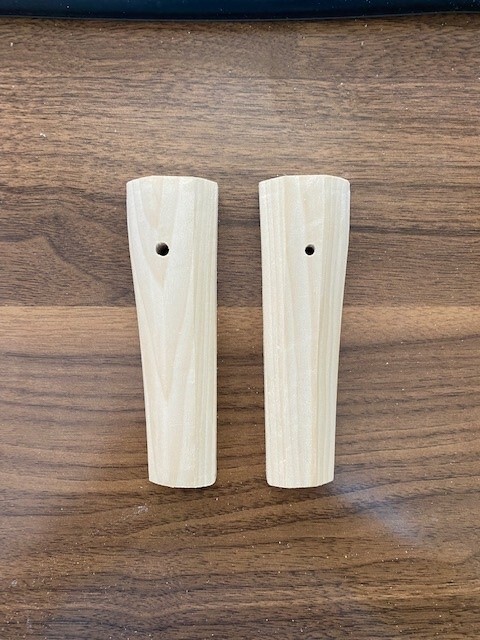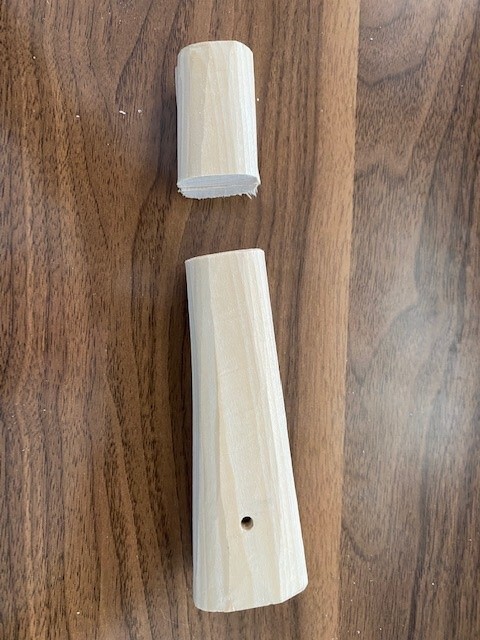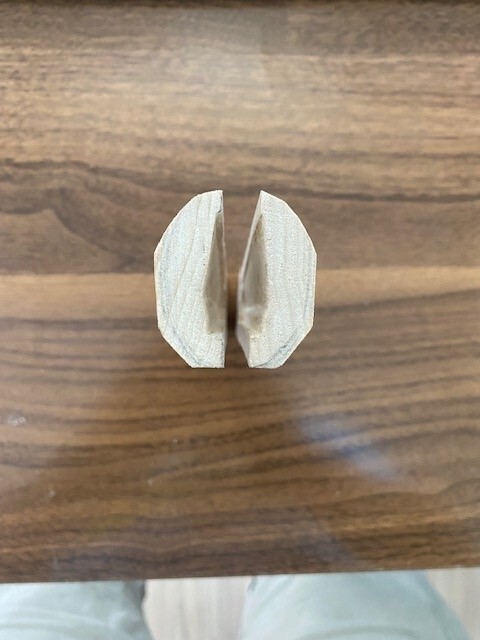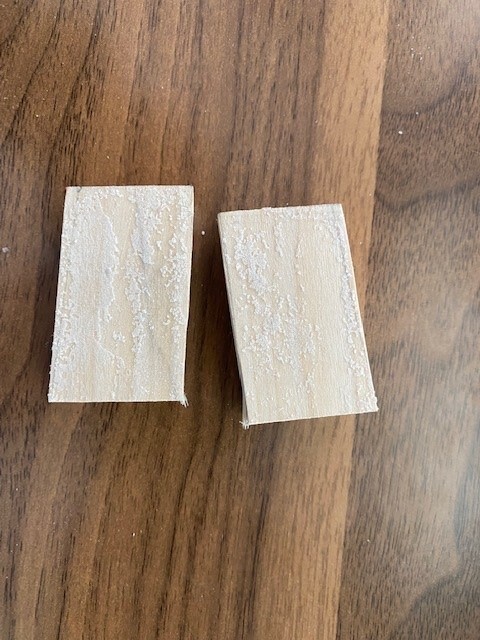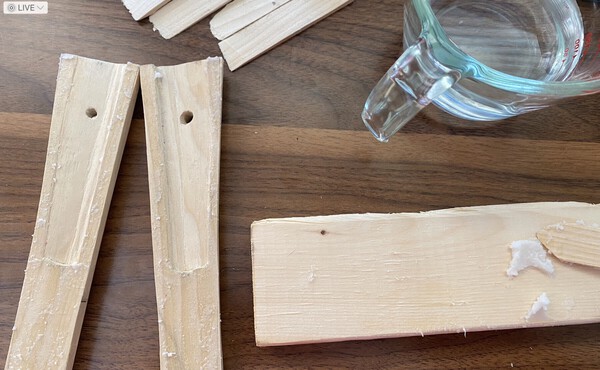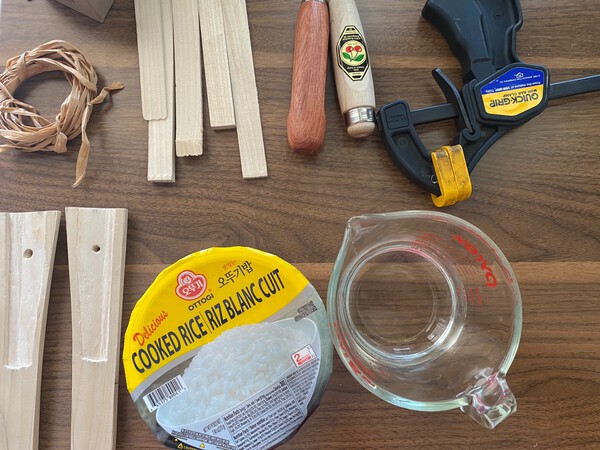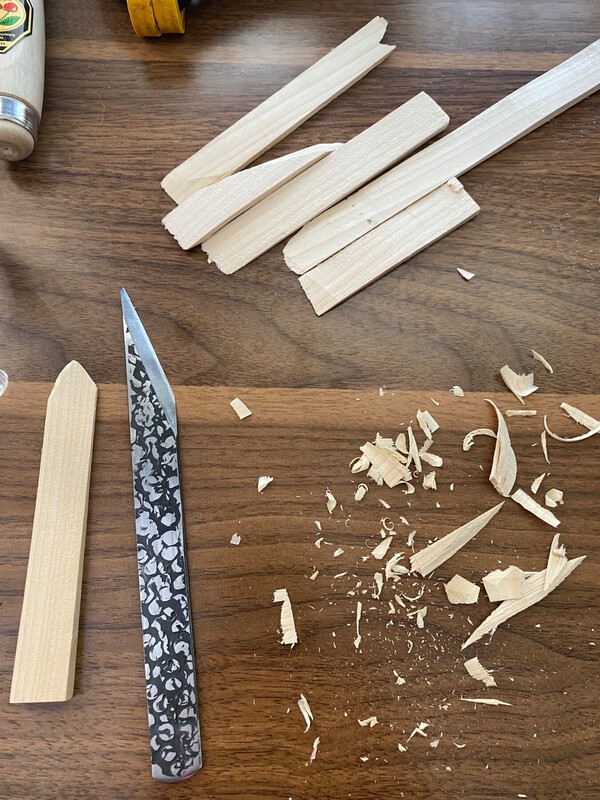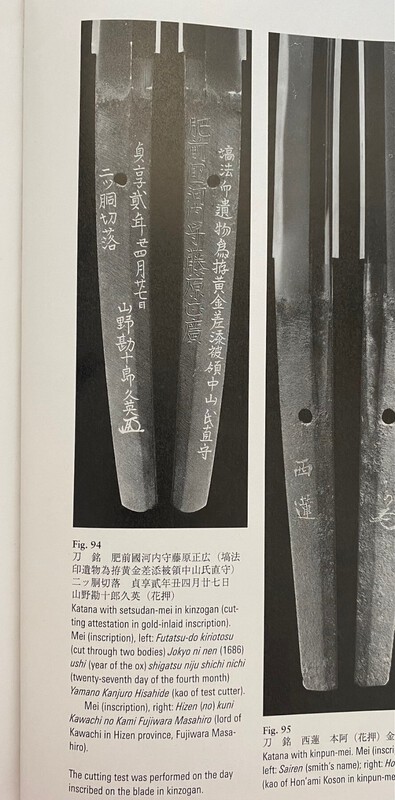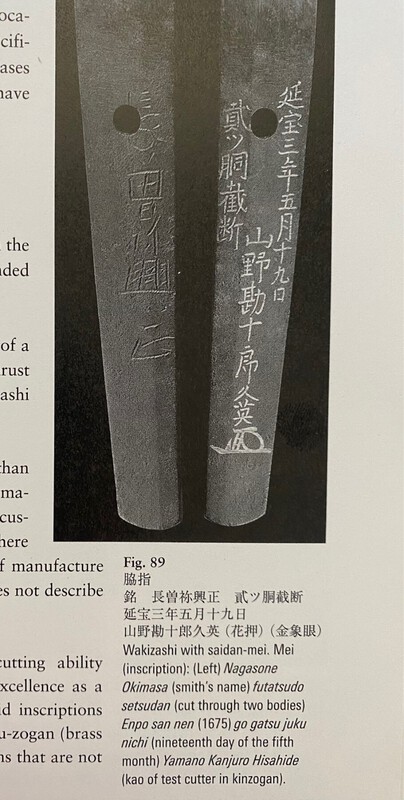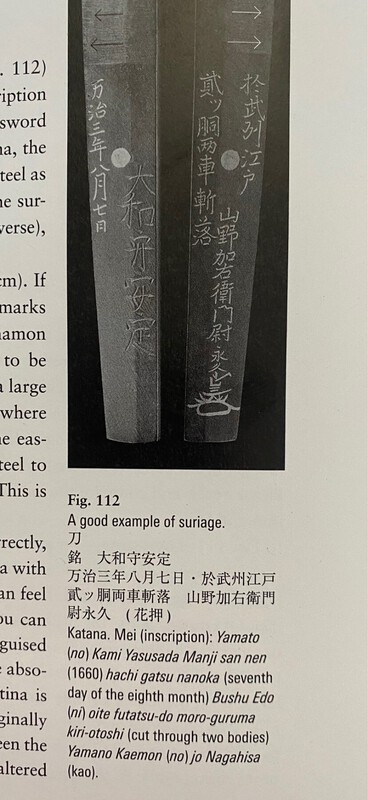-
Posts
235 -
Joined
-
Last visited
Everything posted by WillFalstaff
-
Great advice, Thomas! I definitley need to read up first on Hizen, like John said, then start looking at specific Hizento and see which work is the most tantalizing to focus on. I need to look through my books to see if there are examples of Hizento. Anybody have suggestions on other books with high-res pictures of Hizento? Outside of the the aforementioned authority book on Hizen, off the top of my head Markus Sessko pops up, but I haven't bought any of his books yet and don't know how they are formatted with pictures. Thanks all!
-
Thanks Paul and Kirill! Hizen it is, then wonder into maybe Hosho. If only Roger Robertshaw's print book didn't cost an arm and a leg. The PDF on his website is $39.99, but I prefer physical books. I wonder if anyone has created a step-by-step process for studying schools for beginners. What I keep running into is a mass of information and if there is no Token Kai or any sword club around, it's intimidating trying to sift through the wealth of information. Interacting here on the website is priceless, so it's a good place to start. I think I'll brainstorm a little about my journey into studying nihonto and develop an system of information organization that can be adapted to beginners who want to go deeper.
-

Book - Study of Japanese Swords
WillFalstaff replied to Brian's topic in General Nihonto Related Discussion
I'm a youngin' and I still prefer printed books! The only one I'll have to get the PDF version is Roger Robertshaw's Hizen book. The discontinued print version costs the same as a nice Type 95 NCO. I do have the softcover of Yurie's book and it's loads of important information. -
I am definitely interested in Yamato. Bizen is just too huge for a focused study. Haven't looked into Hizento, but now is great time. So, throwing the smiths idea to the side, I think I'll start with Yamato and Hizento. I gotta make a decision on the period now.
-

Shirasaya—I’m making one
WillFalstaff replied to WillFalstaff's topic in General Nihonto Related Discussion
Hey folks, Putting this project on pause, but for a good reason. We just bought a house (finally!) after moving to planet Texas. It’s brand new—in fact it’s so new it will finish building and ready to move in at the end of June. Lots of talks with mortgage brokers, real estate agents, and packing, packing, packing. The upside is that I’ll finally have shop space and shelves for wonderful, shiny, new tools! Until then, stay tuned. If I can make time, I will make actual sukoi and post pics of my Koi belly tsuka-monster, but no promises. -

A very interesting aikuchi
WillFalstaff replied to Okan's topic in General Nihonto Related Discussion
I’m aware of Nanban steel used in tsuba, and to a lesser extent in swords. It’s always interesting to see “outside” steel being used to create Japanese style weapons. Solingen blades are tops for European type weaponry and the steel would have been mono steel, but better quality throughout than some tamahagane. -
Andrew, have you encountered this type of asymmetry often? I’ve seen this just a few time, but I’ve never particularly minded it.
-
That was a toss of the coin for me, when I was thinking about this--should I start with a smith or a school? I'm still considering school also, but what studying a smith(s) would do better is reduce the variables to; a time period, a certain school, and the life of the smith and his works. I think aiming small, will miss small. Once I've gotten to know a smith or two comprehensively, I think I'll entertain studying wider like a school at their height of artistry. Now I need to go through and pick a few smiths and throw them up for all ya's consideration.
-
I've been drooling over that one since Jake put it up.
-
That is also an approach for me. Thanks Grey!
-
Need some opinions. Since I am woefully under-educated on smiths, nevermind their styles (Masamune was famous, right? ), I want to narrow my study down to about 5 popular smiths. I am of the opinion that going by the blade that best strikes you is the best way to buy a blade, but in the quest to have a deeper understanding of nihonto and the culture around it, I think I need to really get to know at least a few smiths, their work, and their lives. I had the idea while thinking about how some people prefer to study only certain painters and sculptors to get a good idea of the stylistic changes throughout their careers (or seasons), then branch out with a foundational knowledge. I know that when I'm studying any part of history, I focus on one period and one person/event/family, then follow from there to peripheral study that are related. The caveat is I want to focus on smiths who's work a starting collector can actually acquire and posses as a first nihonto. (Sub-$10K, I think.) This idea follows Brian's preaching about not buying 10 "meh" blades and saving up for one "YAY!" blade. I am guilty of buying cheap stuff, though there is something to be said of at least owning a couple of "meh" blades that are in decent polish and trying to reveal something about them through study, as opposed to staring at pictures and museum displays only for months/years. So, all you veterans out there, five approachable smiths to own and study deeply? (And if this has been asked before, then and a link would be appreciated)
-
In the Kapps and Yoshihara’s Craft of book (1987), they describe how the hi are carved by apprentices, but I’m not sure if that was the case throughout history. That could explain the asymmetry. I think the polisher has to make decisions on the sword he’s working on as a whole. If there is a flaw/damage on one side, and creating asymmetry hides this well, then that’s more important than keeping complete symmetry. I’m betting whoever polished the sword had a discussion with the customer about this asymmetry and decisions were made for the sword as a whole. It’s distasteful to some, but to others it may be a unique characteristic or a personality.
-

Shirasaya—I’m making one
WillFalstaff replied to WillFalstaff's topic in General Nihonto Related Discussion
Oh, yeah, I know. This is the experiment. I call it my Koi Belly tsuka. Grey - Yeah, the sokui was very suckie. Believe it or not, after drying there was hardly a gap anywhere, except on the cut-off section, hence the separation and "paste". I'm also noticing that I'll have to pay particular attention to the to the contact faces of the two sides. When I scraped off the glue residue, even though I was careful I must have bit a little into the surface. It's a small oopsie, about 1/2 mm, but now my joining surfaces are off and there's a gap between the tsuke. I'll have to do some serious micro-planing to re-create the invisible seam. Joining is an art onto itself. Awesome video, Dave! That antique metal router plane he's messing with at the beginning looks almost like the fullering tool the smith apprentices use to carve out the hi on fresh blades. I've had to improvise a lot, due to my limited circumstances and lack of power tools, but I am learning to appreciate the art of precise hand tools. That being said, once we buy a house, I'm getting a damn router and going modern on a shirasaya. Traditional is great, but if I can create a shirasaya in context of modern times and tools, well so be it. I've had carpal tunnel surgery on both of my wrists (thank you construction work in my formative years) so my hands do tire out faster and are prone to some weakness. Thank you for all the advice! -

Films featuring Japanese swords
WillFalstaff replied to Kolekt-To's topic in Military Swords of Japan
-13 Assassins (Amazon Prime) -The Age of Samurai: Battle for Japan (nutflix) - not a movie, but lots of armor and arms. -Shogun (TV mini series). Fun fact, I think they are going to be remaking this movie to better reflect the content of the novel. The original was good, but had to omit a lot due to budget and format constraints. -
It is pretty good! Watched the first three episodes already.
-

Shirasaya—I’m making one
WillFalstaff replied to WillFalstaff's topic in General Nihonto Related Discussion
Well, as Dave has said, the ordinary rice did not hold fast. It didn't help that I realized only after gluing that I had wanted to saw off the tail end of the tang part. It was probably the sawing while glued, and the inferior rice, that led to the two parts separating. Lesson learned. The poplar grain is starting to be an issue, now that I'm down to finer detail whittling and kiridashi knife planing. In either case, this experimental first shirasaya is turning out better than I thought it would. -
I guess there’s a lot of dew on bamboo leaves in the morning in Japan. (Ok, I’ll leave now)
-
Obviously an o-suriage. Must have been a sad day when the owner realized he had to get the sword chopped away. How common is a mei being re-written when it couldn’t be saved with the known methods?
-

Help with Mei and Nengo on Tanto.
WillFalstaff replied to tbonesullivan's topic in Translation Assistance
Could this have been and up-the-sleeve dagger for women? The aikuchi mounting and the blade size leads me to this. Also, the nakago seems to end abruptly. Is that normal for a wee implement such as this? -

Shirasaya—I’m making one
WillFalstaff replied to WillFalstaff's topic in General Nihonto Related Discussion
-

Shirasaya—I’m making one
WillFalstaff replied to WillFalstaff's topic in General Nihonto Related Discussion
After rechecking the nakago fit and mekugi alignment, I decided it was time to see how good I am at making Sokui. (Using example from Crossed Heart Forge). I ran into pre-cooked rice at the store the other day. It wasn’t as sticky as overcooked rice, but adding water while I smushed it helped make it very sticky. Also, as I was making the paste I kept thinking “how could this possibly get as sticky as it should?” Well, it did, and it’s very sticky! What didn’t work: - We have cats. Cats climb and rub on everything, especially something new like a freshly carved shirasaya. Ergo, I had to clean off the surfaces of the tang section as there was cat fur on everything. - I smushed and made the rice paste on a wood surface. On reflection I realized it was a section of pine. It was pretty dry, but I need to mix my paste on poplar next time to avoid any contamination from sap. - Paste could have used a few more drops of water. Fixed it by rubbing a slightly damp finger across the surface to be glued. What worked: - Making the paste was stupid simple. - My handy-dandy wood spatula for smushing and applying the paste. - The shims I carved from left-over poplar to tighten the binding around the glued parts. - The weather is actually pretty dry today (shocking, for the Houston area), so hoping a couple of days is enough to set the glue - On seeing the pictures, it looks like my paste isn’t wet enough, but it gooifyed as I squeezed the two halves together. -

Shirasaya—I’m making one
WillFalstaff replied to WillFalstaff's topic in General Nihonto Related Discussion
I too have been told this, by a little birdy.






